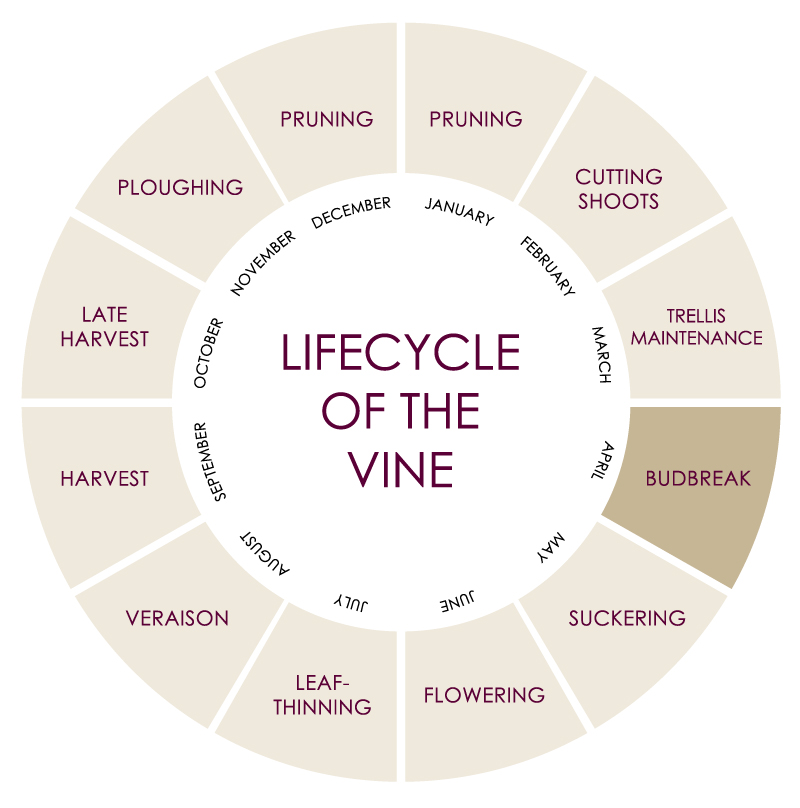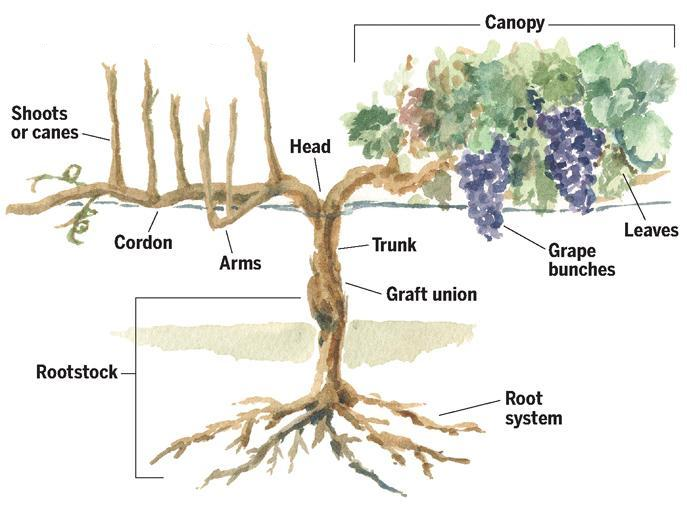Grapevines are deciduous plants. This means that, during the cooler months, they lose their leaves. Their lifecycle which consists of seven stages allow them to continue to live for hundreds of years. No one stage is less important than another. Each one plays an integral part in producing quality fruit that we then turn into wine. The stages are: 1) budburst, 2) flower cluster initiation, 3) flowering, 4) fruit set, 5) berry development, 6) harvest, and 7) dormancy.

During berry development, the grape begins to rapidly increase in size. Around 15 days prior to veraison the seeds have reached their final size and weight. These seeds are extremely important to the grapevine, being its way of continuing its propagation. Sugars are carried from the vine into the grape to make sure that the seed has enough energy to live.
Sugar, in the form of glucose and fructose are stored in the flesh, and to a lesser extent, in the skin. These sugars accumulate after veraison, as the berry itself decreases its consumption.
The total sugar in a fully ripened grape varies significantly depending on the environmental and viticultural conditions as well as the variety itself. Warmer climates allow the grapes to mature fully and more easily. Sugars in warm climates will be higher, thereby leading to higher levels of alcohol. But in cooler climates, sugar content is much less and ripening can be difficult to achieve, leading to higher acid levels.

In these cooler regions, where the sugars may not reach acceptable levels, if nothing is done, the wine would have extremely low alcohol levels. In some cases, winemakers may add sugar to the grape juice or must during the fermentation process. This will result in an increase in the finished product’s alcohol content. The process of adding sugar is known as chaptalization.
Chaptalization is a highly regulated winemaking process. It is forbidden in many regions and where it is acceptable, it has strict regulations, such as the form of sugar that can be added and which grape varieties it can be added to. Generally speaking, it is legal in regions that produce grapes with low sugar content, such as the northern regions of France, Germany, and parts of the United States. Chaptalization is prohibited in Argentina, Australia, California, Italy, Portugal, Spain and South Africa.
Have you been missing the weekly Exploring the Wine Glass posts? They have moved. Sign up at http://eepurl.com/be49CD to never miss a post. Subscribe to Dracaena Wines’ blog in the sidebar.
A key fact to keep in mind about chaptalization, is that the addition of sugar is not meant to sweeten the wine. It is added in order to allow the yeast to have more food to consume through alcoholic fermentation. Sweet wines are created by different methods.
Adding sugar to grapes has been around for a long time. In fact, the Romans used to add honey to un-ripened grapes to increase the body and mouthfeel.
The first recorded instance of adding sugar to wine dates back to 1765 in L’Encyclopedie which suggested adding sugar rather than lead acetate. (thank goodness they changed that up!) But it wasn’t until the early 1800s, Jean-Antoine-Claude Chaptal began truly using the process to increase alcohol and help in allowing wine to age longer. This is where the process gained its name.

Please follow us on Instagram, Twitter, Facebook and Youtube.
~Slàinte!


